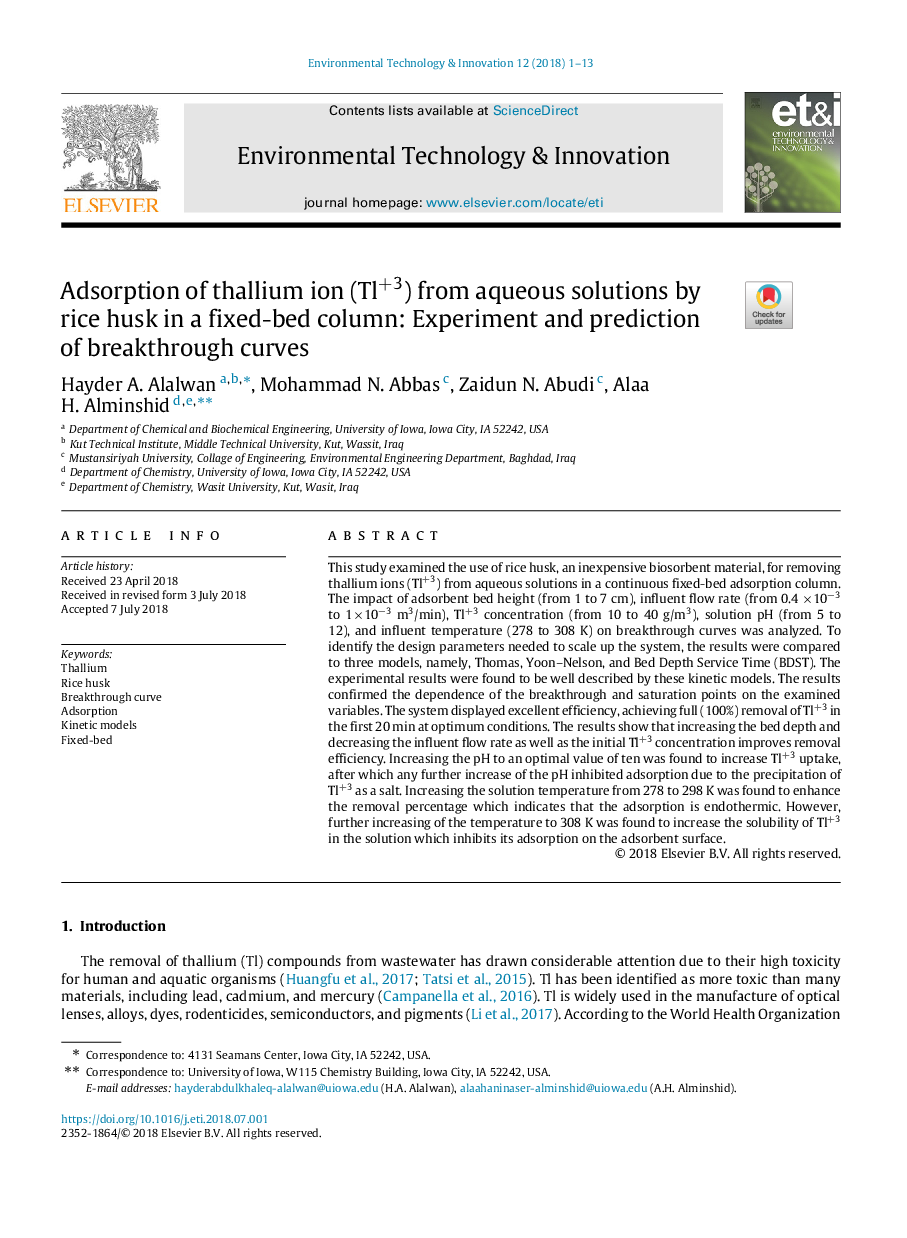| Article ID | Journal | Published Year | Pages | File Type |
|---|---|---|---|---|
| 8857866 | Environmental Technology & Innovation | 2018 | 13 Pages |
Abstract
This study examined the use of rice husk, an inexpensive biosorbent material, for removing thallium ions (Tl+3) from aqueous solutions in a continuous fixed-bed adsorption column. The impact of adsorbent bed height (from 1 to 7 cm), influent flow rate (from 0.4 Ã10â3 to 1Ã10â3 m3/min), Tl+3 concentration (from 10 to 40 g/m3), solution pH (from 5 to 12), and influent temperature (278 to 308 K) on breakthrough curves was analyzed. To identify the design parameters needed to scale up the system, the results were compared to three models, namely, Thomas, Yoon-Nelson, and Bed Depth Service Time (BDST). The experimental results were found to be well described by these kinetic models. The results confirmed the dependence of the breakthrough and saturation points on the examined variables. The system displayed excellent efficiency, achieving full (100%) removal of Tl+3 in the first 20Â min at optimum conditions. The results show that increasing the bed depth and decreasing the influent flow rate as well as the initial Tl+3 concentration improves removal efficiency. Increasing the pH to an optimal value of ten was found to increase Tl+3 uptake, after which any further increase of the pH inhibited adsorption due to the precipitation of Tl+3 as a salt. Increasing the solution temperature from 278 to 298 K was found to enhance the removal percentage which indicates that the adsorption is endothermic. However, further increasing of the temperature to 308 K was found to increase the solubility of Tl+3 in the solution which inhibits its adsorption on the adsorbent surface.
Related Topics
Life Sciences
Environmental Science
Environmental Chemistry
Authors
Hayder A. Alalwan, Mohammad N. Abbas, Zaidun N. Abudi, Alaa H. Alminshid,
